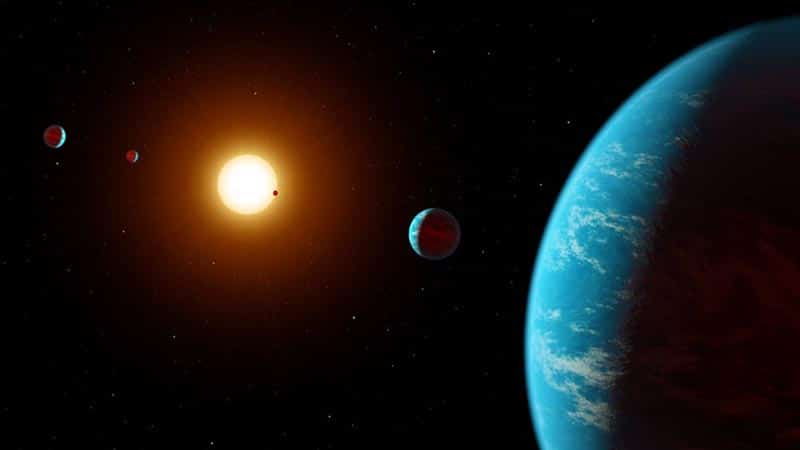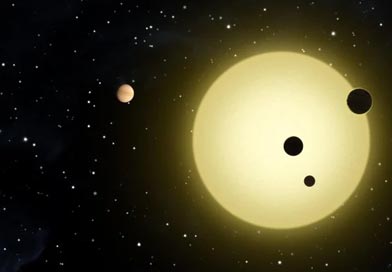Did we discover Super-Earth in a Six-Planet System?
Scientists for many years now have been discovering various stars and planets that are scattered around the galaxy. To say the least, each one is unique in its own self, but, what if we were to tell you that one found very recently is truly special.
Scientists have found a set of six planets orbiting in almost perfect harmony around the star HD 158259. HD 158259 is almost the same mass and a litter larger than the Sun, which in itself is a minority in our exoplanet hunts. A “Super-Earth” and five “mini-Neptunes”, which display an exceptionally regular spacing or you may say perfect orbiting resonance is displayed.
What is Orbital Resonance?
Orbital resonance is when two bodies orbit around their parent body in a close link or chain which in turn is based on the gravitational influence on each other.
The best example of this resonance is Pluto and Neptune. For example for every 2 laps of Pluto, Neptune makes 3 laps around the Sun.

This orbiting resonance is witnessed in exoplanets also but all these six planets orbiting HD 158259 have almost 3:2 resonance with the next planet. This discovery will help us to understand the mechanism of planetary system formation and how these planets and stars end up in the position or configuration we witness today.
The discovery team
The discovery of these planets was made possible by an international team of researchers who were led by astronomer Nathan Hara of the University of Geneva in Switzerland. Using the measurements generated by SOPHIE SPECTROGRAPH and TESS exoplanet-hunting telescope the researchers were able to calculate the orbits of the planet precisely.
Nathan Hara said,
“The current departure of the period ratios from 3:2 contains a wealth of information. With these values on the one hand and tidal effect models, on the other hand, we could constrain the internal structure of the planets in a future study. In summary, the current state of the system gives us a window on its formation.”
These planets are close and very tight. The super-Earth, which is closest to HD 158259, is twice the mass of the Earth. The orbits are, starting from the closest, 2.17, 3.4, 5.2, 7.9, 12, and 17.4 days. These produce period ratios of 1.57, 1.51, 1.53, 1.51, and 1.44 between each pair of planets, which is near perfect resonance but not perfect. This made the researchers believe that the planets did not form where they are right now in this system.
Astronomer Stephane Udry of the University of Geneva explains,
“Several compact systems with several planets in, or close to, resonances are known, such as TRAPPIST-1 or Kepler-80. Such systems are believed to form far from the star before migrating towards it. In this scenario, the resonances play a crucial part.”
According to Isabelle Boisse, a co-author of the study and a researcher at the Marseille Astrophysics Laboratory in France, the TESS measurements allow them to estimate the radius of the planet, which in turn brings valuable information about its internal structure.
According to the researchers, the planets can be close to the resonance but not exactly within the range except for this six-planet system. For these researchers it is exceptional.

